Growing up I spent most of my Christmases in Norway, but even when we stayed in the US for Christmas my Norwegian mother of course had us baking lots of Norwegian Christmas cookies. So I guess that means I’m biased, but I really do think Norway has some of the best Christmas cookies in the world.
Traditionally Norwegians make seven types of cookies each Christmas, and if that sounds like a lot of work, it is.
But the fun part is that every family chooses which seven they want to bake, so then when we exchange with friends and colleagues we can end up with thirty different kinds of cookies! It’s okay, we need a bit of fat on our bones to survive these cold temperatures.
This means that over the years I’ve done a lot of research into the best Norwegian Christmas cookies. And based on all that research, here are my seven Norwegian Christmas cookies – with recipes, because you’re definitely going to want to make these this Christmas:
And don’t forget to get some festive cookie tins to store your Norwegian Christmas cookies in!
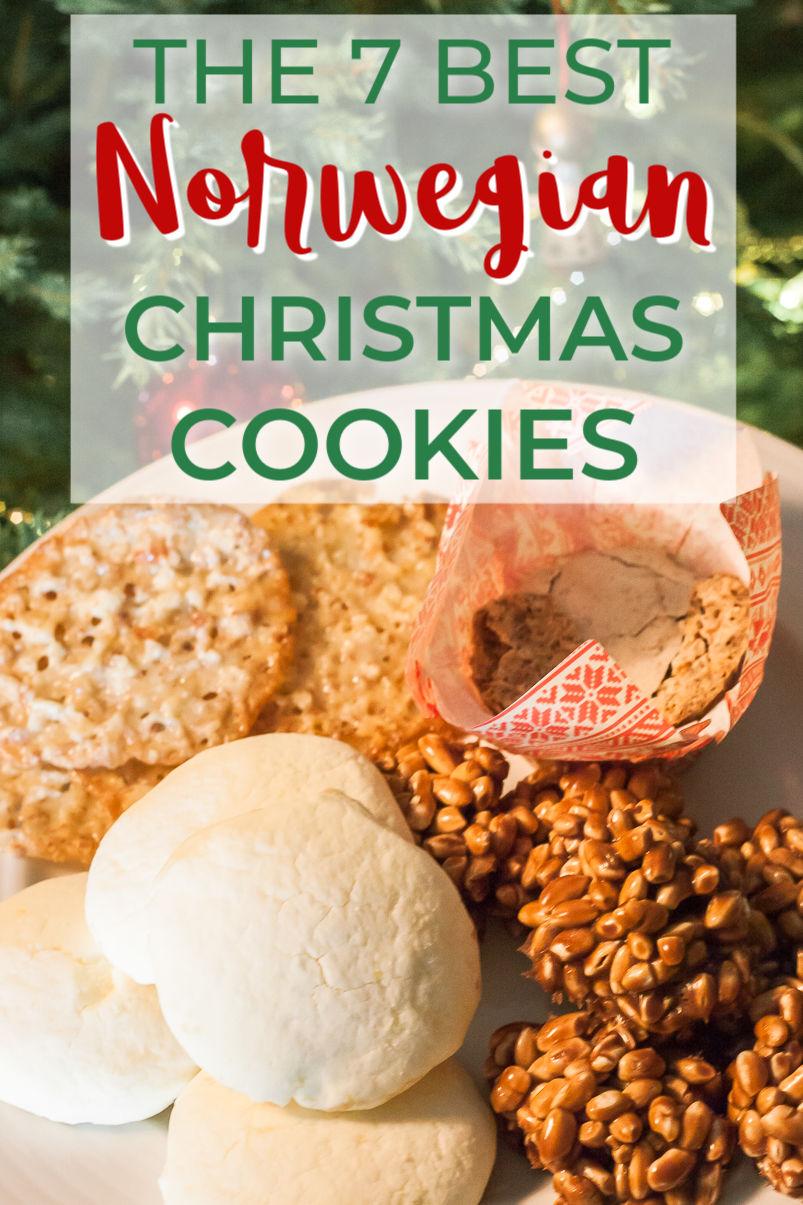
Sandnøtter | Sand cookies
Sandnøtter, or sand cookies, are a simple shortbread cookie, but they’re actually my favorite Norwegian Christmas cookie! Though I remember my Aunt Hege making a bunch of different Norwegian Christmas cookies for her American friends in the US one year and saying that the sandnøtter were the least favorite amongst her friends, so maybe they don’t appeal to everyone? I still think they’re the best.
Serinakaker are a similar Norwegian Christmas cookie, usually topped with almonds, as well as vaniljekranser (vanilla wreath cookies), which are made with a mix of all purpose and almond flour. But my favorite of the bunch are sandnøtter.
There are a lot of slightly different versions of sandnøtter, but the best are with lemon zest! I adapted this sandnøtter recipe (it’s the third recipe on the page), which is nice and lemony. It’s in Norwegian, but I’ve shared my adaptation in English on my Norwegian food blog here. The recipe also includes a video, so you can see exactly how I make them.
These Norwegian sandnøtter are made with potato starch, so they also happen to be gluten free Christmas cookies!
Risboller | Chocolate puffed rice balls
I decided to make risboller this year for the first time in a long time. My Aunt Hege always makes these, and as a child they were my favorite Norwegian Christmas cookies. They’re no bake Christmas cookies, which also makes them great Christmas cookies to make with kids!
Most Norwegian recipes for risboller include raw eggs, but since a lot of you are American and raw eggs are not always safe to eat in the US, I created a version of risboller without eggs. And I actually think this is my favorite risboller recipe now! They’re so easy to make, but they taste quite unique and always get so many compliments.
I’ve shared my risboller recipe without egg, including a video, on my Scandinavian food blog here.
Mandelflarn | Almond lace cookies
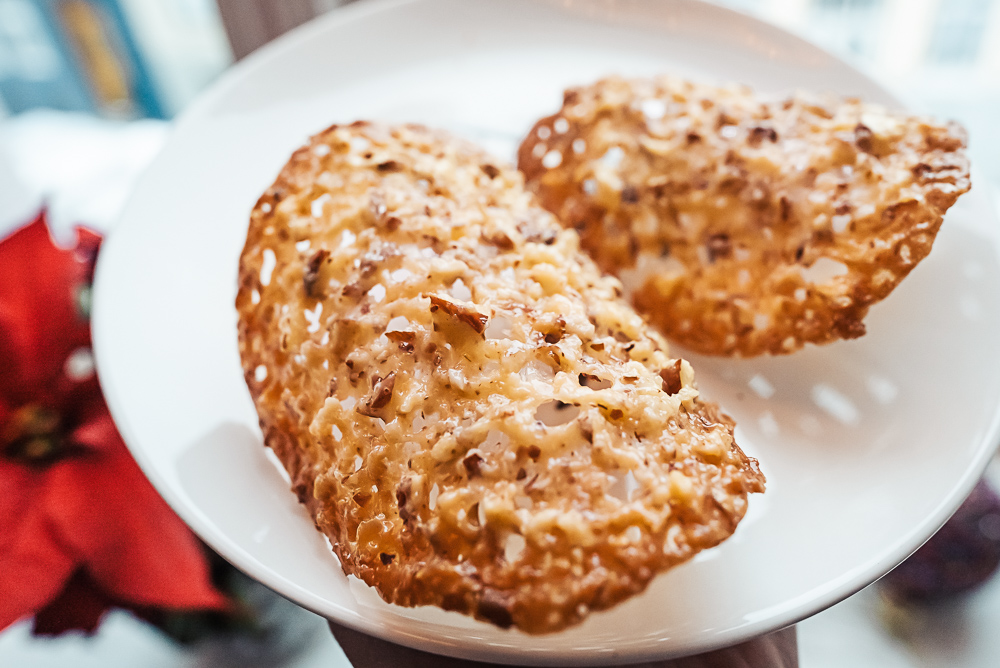
My grandmother always included mandelflarn, or almond lace cookies, in her Christmas cookie boxes, and they are so delicious. I decided to make them this year even though I remember them being really difficult. But it turns out they’re super easy – the only difficult part is shaping them into cylinders, which my grandmother always insisted on, but I sometimes skip that step and enjoy the flat cookies just as much.
I used this mandelflarn recipe in Norwegian. Make sure you only use a small teaspoon of dough per cookie, and give them lots of space on the baking sheet to spread out. Oh and keep an eye on them in the oven, as they burn quickly. The recipe said to bake for seven minutes, but mine were done in five!
I’ve translated the recipe to English and filmed an instructional video of how to make them on my Scandinavian food blog here.
Krumkaker
Norwegian krumkaker (the plural of krumkake is krumkaker) are so delicious, and actually a lot easier to make than you might expect.
You will need a special krumkake iron and wooden roller for these, which I agree is not ideal if you’re short on storage, as krumkake irons can really only be used to make krumkaker. But the good news is that krumkaker are so tasty you could absolutely make them year round to really get your iron’s worth.
My mom likes to form krumkaker into little cups by cooling them over a glass or cup and then she serves them with a scoop of ice cream inside! They have a beautiful pattern stamped into them from the iron, making for a quite unique and very Norwegian dessert.
I’ve shared my krumkaker recipe, including a helpful video, on my Scandinavian food blog here.
Sarah Bernhardt cookies
Sarah Bernardt cookies are technically Danish, and named after a French actress, but they’re beloved in Christmas cookie boxes here in Norway.
These are one of my absolute favorite Christmas cookies and well worth the multiple steps in the recipe.
I’ve shared my Sarah Bernhardt cookie recipe along with a video on my Norwegian food blog here.
I’ve also shared a recipe for an alternative version of Sarah Bernhardt cookies with yellow cream (they’re SO good) here, if you prefer a slightly salty rather than chocolate center. They’re like mini, chocolate covered success cakes.
Fattigmann | Poor man’s cookies
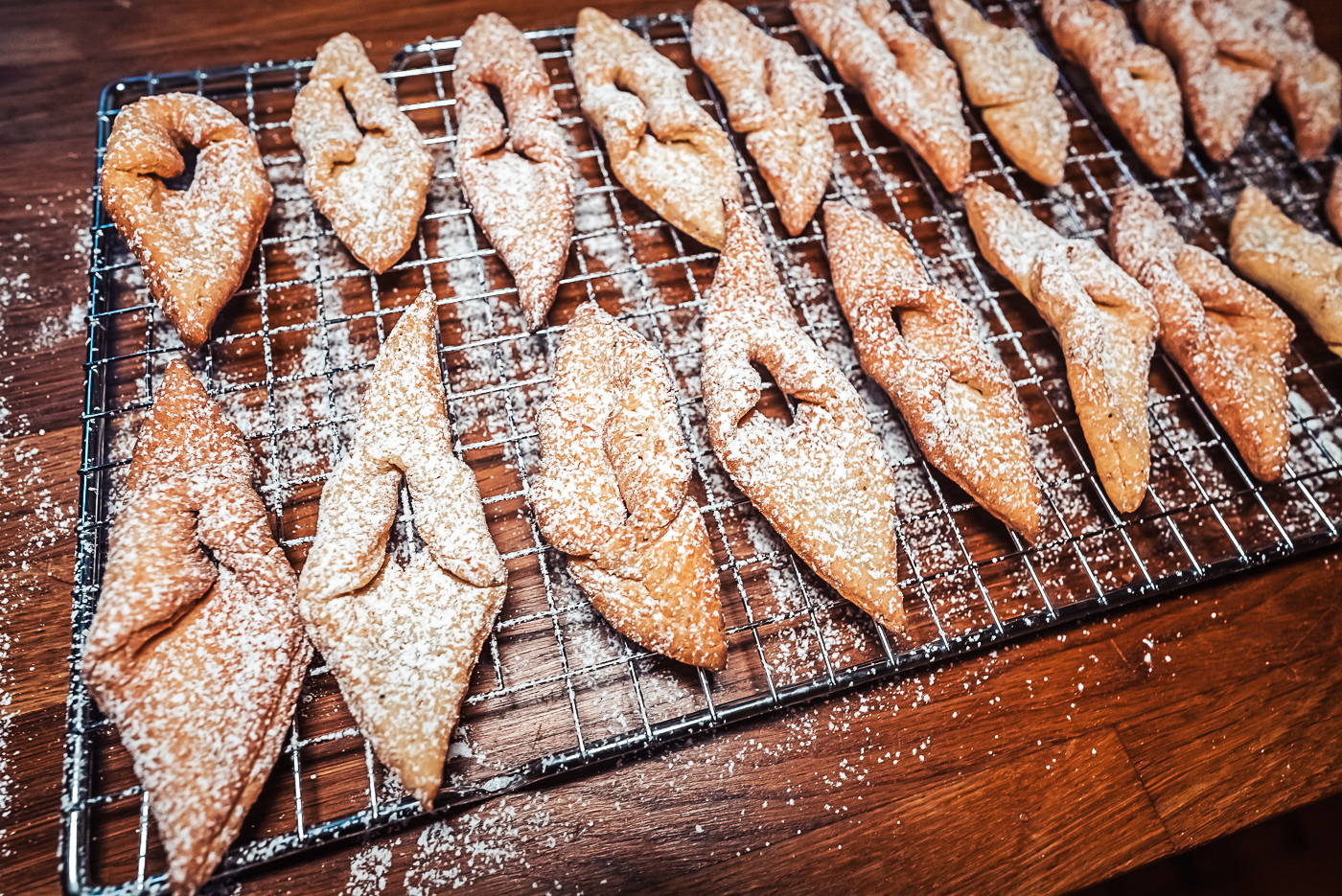
I’m not usually a fan of fried sweets, but fattigmann are so nostalgic I have to make them every Christmas. These date back to the Middle Ages and since they’re cooked on a stove, people without ovens could make them. They’re called poor man’s cookies because they’re made with historically expensive ingredients like butter, flour, and cream, so after making them you’ll be poor. I guess they’re also a metaphor for Christmas.
I’ve shared my fattigmann recipe in English and filmed an instructional video of how to make them on my Scandinavian food blog here.
Smultringer
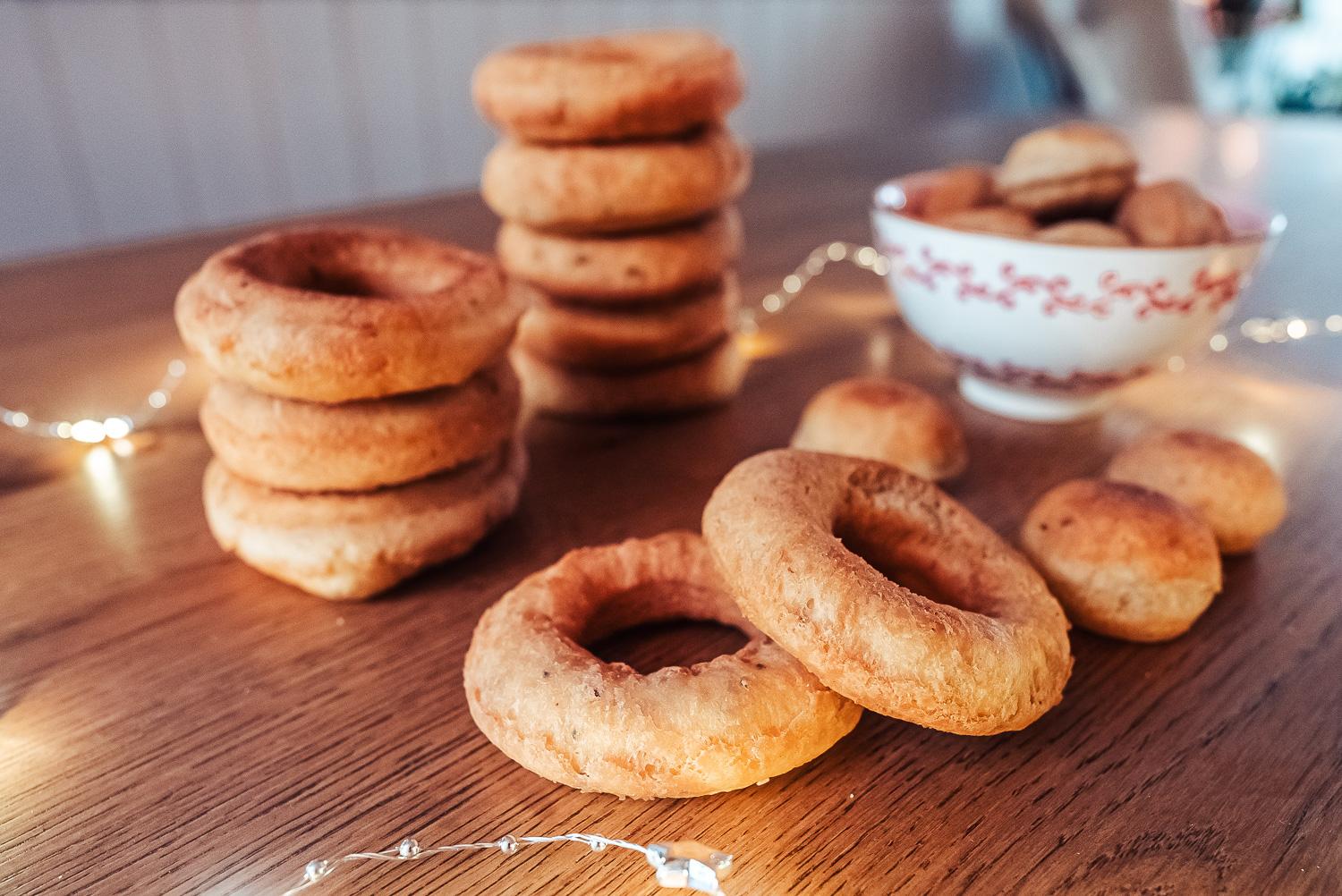
Smultringer are basically an extra delicious old fashioned donut.
Smultringer are traditional Norwegian donuts spiced with cardamom. I don’t know if it’s the cardamom or their being homemade, but I have always loved smultringer. They’re especially popular in Norway around Christmas, but I will happily eat them any time of year.
I’ve shared my smultringer recipe in English along with an instructional video here.
Bonus: Kransekake
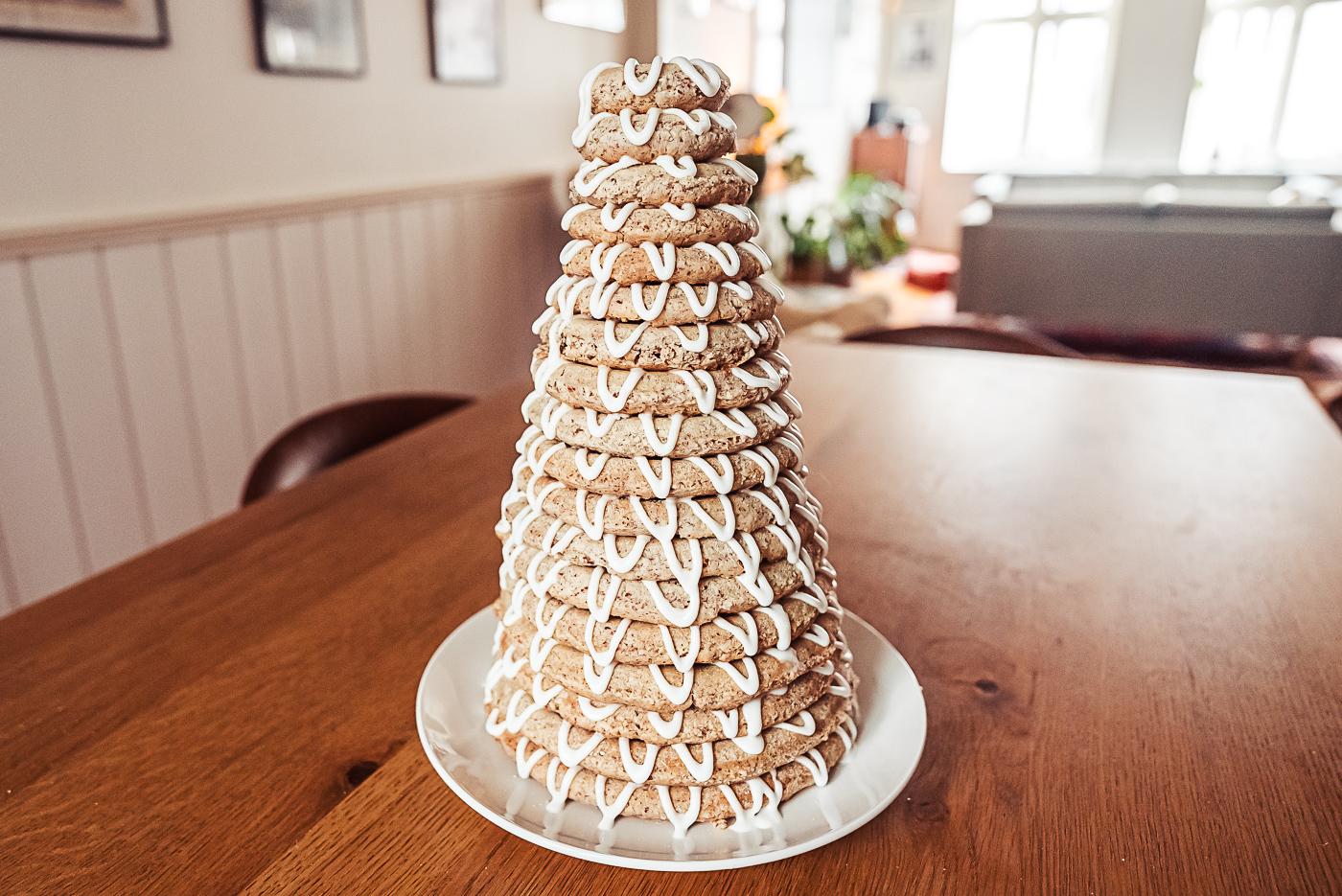
Kransekake, or “wreath cake,” is made of 18 almond rings stacked on top of each other. I guess it’s considered a cake, but really it is more like a bunch of almond cookies, so I’m including it as a bonus on this list. Norwegians make kransekake for various celebrations throughout the year, including Christmas, New Year’s Eve, weddings, and the 17th of May.
You can find my kransekake recipe here.
Bonus 2: Vepsebol
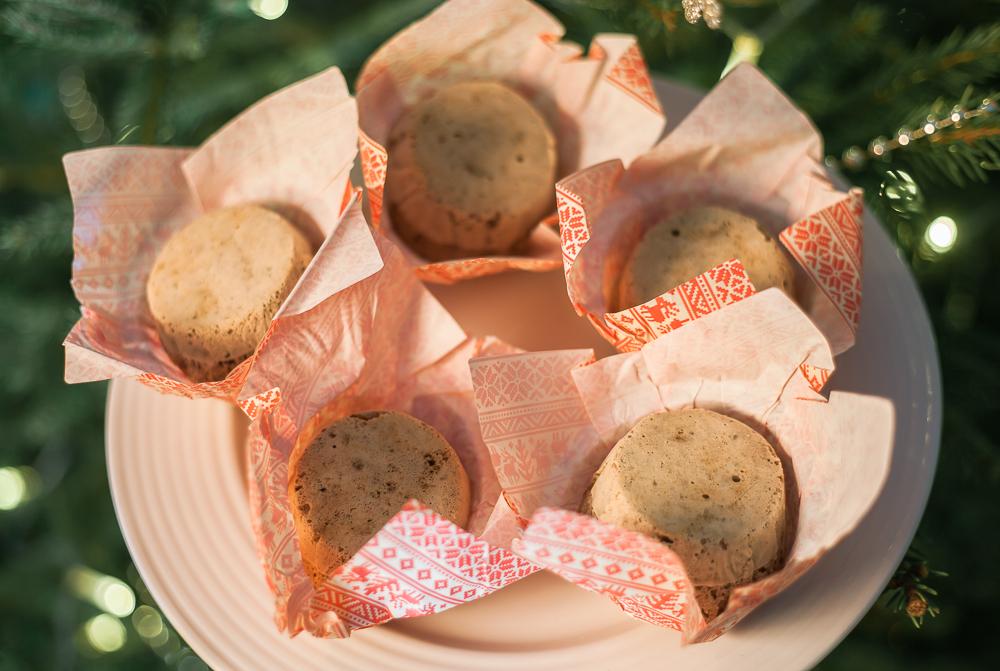
I had never had vepsebol before, but last year my friend Vanessa decided to make them for our Christmas together and they were so good that I’m including them as another bonus cookie to add to my Christmas seven (or eight).
One thing I learned about these last year is that you really need an electric mixer for these because wow, beating meringue is not easy. At least after that workout I was strong enough to carry my Christmas tree downstairs in January.
Vanessa used this vepsebol recipe, but she made them with a mixture of almonds and hazelnuts, which was extra delicious. We couldn’t get the eggs quite stiff enough while beating by hand, so we baked them in cupcake forms so they would keep their shape.
Norwegian vepsebol Christmas cookies recipe
- whites of 2 eggs
- 2 teaspoons vanilla sugar
- 125 grams (generous 1/2 cup) superfine sugar (regular granulated is also ok)
- 125 grams (3/4 cup) dark chocolate, chopped
- 125 grams (3/4 cup) almonds, finely chopped (can also use half almonds and half hazelnuts)
1. Preheat oven to 170°C hot air (340°F).
2. Whisk the egg whites until thick in a bowl. It’s best to use a glass or metal bowl, because a plastic bowl may have small residues of oil which can make it difficult to get the egg whites stiff enough.
3. Mix the vanilla sugar and sugar, and gradually add them to the egg whites, while whipping at medium speed. Continue beating the egg whites until you have a stiff and glossy meringue.
4. Carefully fold the almonds and chocolate into the meringue using a spatula. Be sure not to stir more than necessary.
5. Spread small peaks of meringue on a baking tray lined with baking paper.
6. Bake for 18 minutes. Be careful not to over bake, as the meringue will harden. Cool on a rack. Store in a cookie tin.
Does your family make seven Norwegian cookies for Christmas? I’d love to know which ones!
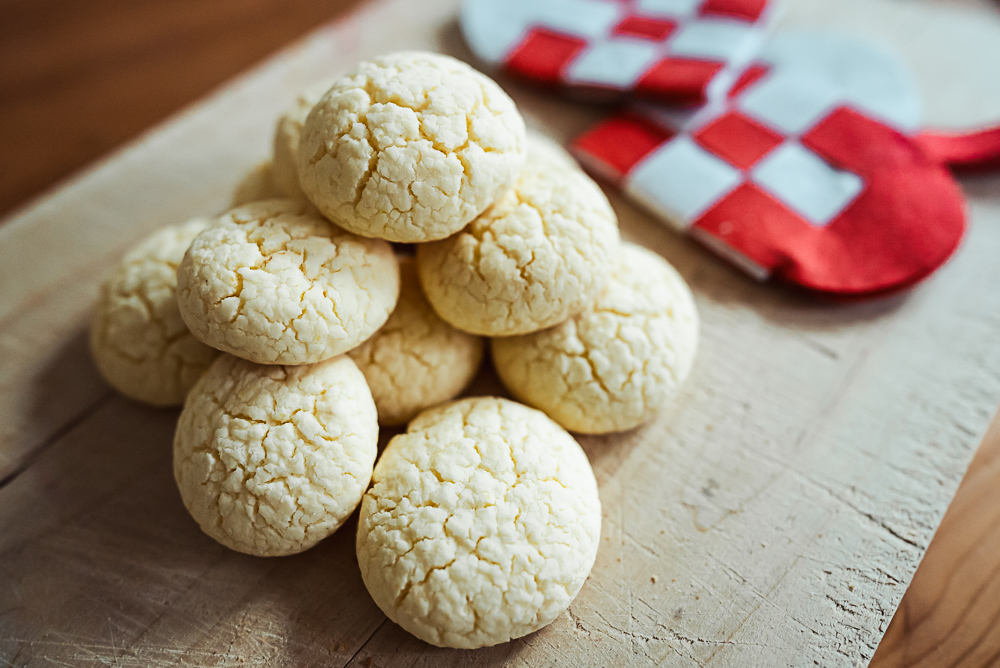
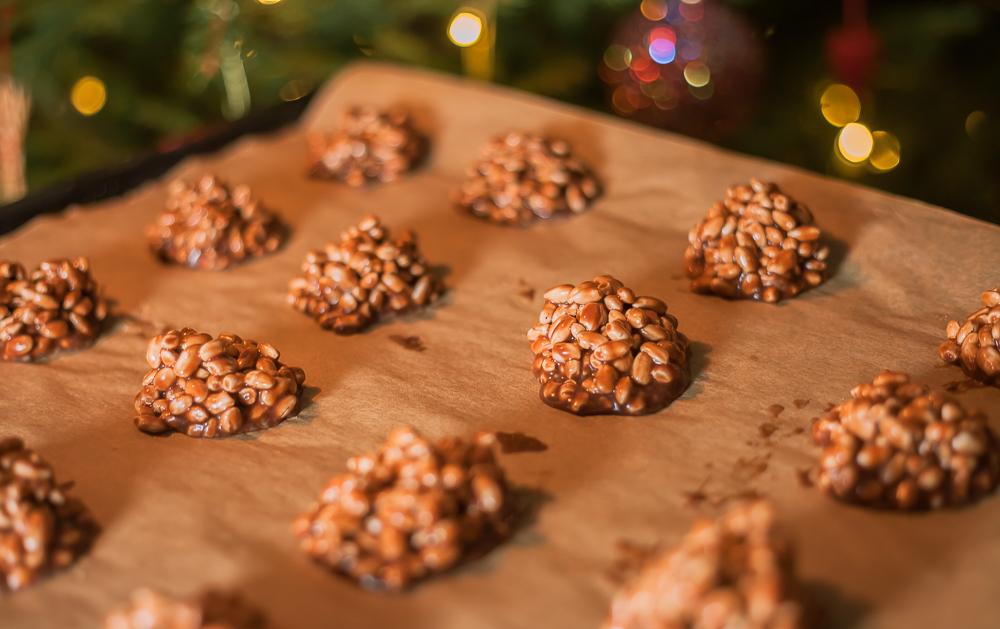

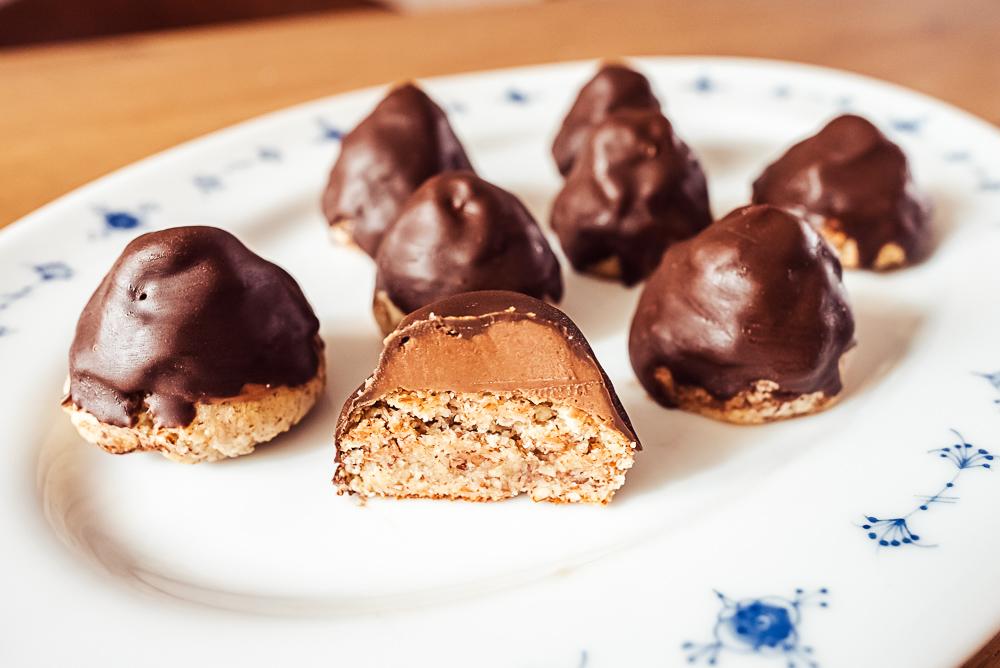
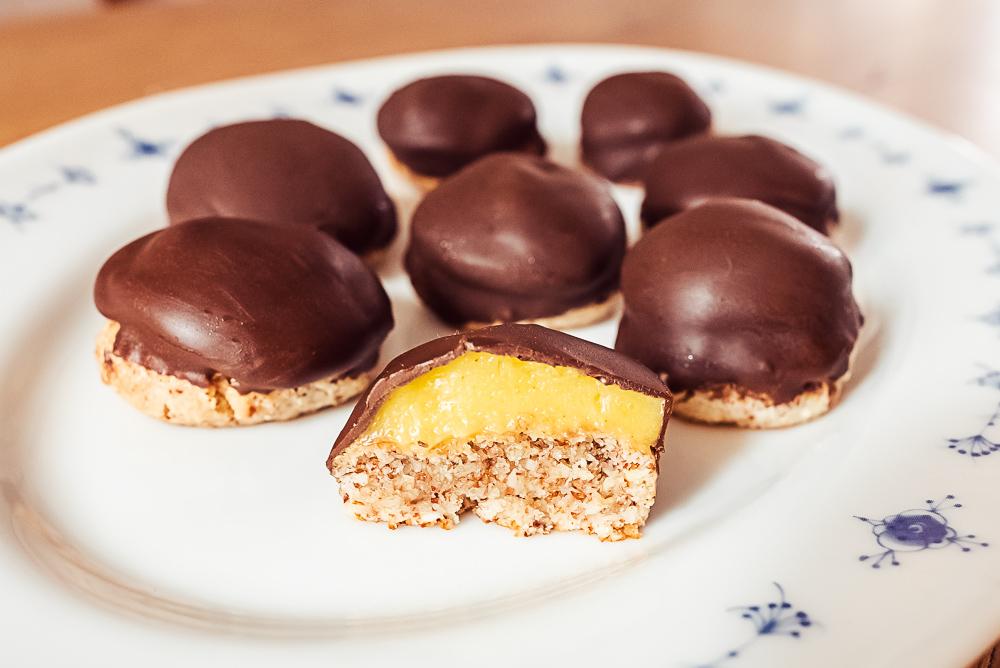
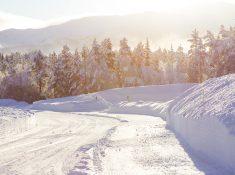
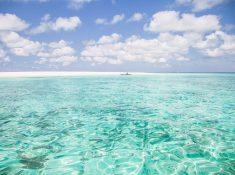


Anne says
I’m definitely going to have to try some of these recipes this year. I made saffron buns and the heart shaped pancakes last year after seeing you make them on here. I’ve never been able to find brown cheese though so I haven’t had the true Norwegian experience yet!
Tone Cresswell says
You can usually find the Ski Queen version of the Norwegian brown cheese in Wholefoods, usually in the dairy fridge, not the cheese counter
Barb says
You might try Gjetost cheese from Norway. It is a brown cheese and has a very interesting taste and texture. This might be the cheese that is referred to in the recipe.
Muzo says
They look all delicous.Third is at first range of the list to try
Sasha says
Your sandkakers look very different to any my MIL makes. Are there different cookies with the same name? Hers are these little cookie cups or stars.
Silvia says
Yes, you can shape the cookies in molds if you want!
Chris says
I found an electric ice cream cone maker and have had good luck making krumkake even there is no pretty pattern on them.
Bella says
I will have to see if my grandmother remembers any of these. Do you happen to know one that uses cardamom, it’s a family favorite in the older generations but no body knows which?
Silvia says
Maybe you are thinking of krumkaker? https://scandinaviancookbook.com/norwegian-krumkake/